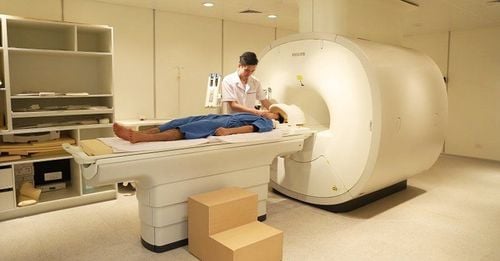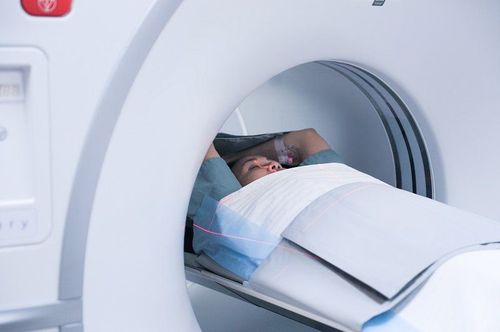This is an automatically translated article.
The article is professionally consulted by Master, Doctor Nguyen Thanh Nam - Radiologist - Department of Diagnostic Imaging - Vinmec Danang International General Hospital.Magnetic resonance imaging (MRI) is an effective, safe, and fast imaging method that is widely used today. Magnetic resonance imaging (MRI) does not require anesthesia, but in special cases the doctor may need supportive anesthesia.
1. Magnetic resonance imaging (MRI) when is anesthesia needed?
Magnetic resonance imaging (MRI) is a modern, revolutionary imaging technique for medicine. Magnetic resonance imaging (MRI) creates high-resolution anatomical images of body parts, helping to accurately diagnose lesions. Magnetic resonance imaging is performed using magnetic fields and radio waves, so it is not as far-fetched as X-ray and CT techniques that use X-rays.Magnetic resonance imaging (MRI) does not require anesthesia. Just check to remove metal objects, magnetic materials may be affected or affect the shooting process. With metal foreign bodies such as shrapnel, daggers... in the body. The doctor may have to remove it before the scan or not order an MRI.
For patients using assistive devices in the body such as pacemakers, medicine pumps, artificial heart valves, etc., other techniques will be assigned to ensure safety and not affect the machine. pacing as well as patient health.
Magnetic resonance imaging requires the subject to lie still and cooperate with the Technician during the examination, usually 30 minutes to 60 minutes depending on the imaging technique and whether or not magnetic contrast is used. If the client is not still and cooperative during that time, anesthesia is required to perform the magnetic resonance examination. Common situations are pediatric patients, neuro-excitatory diseases in children or adults, so they cannot lie still for magnetic resonance imaging. Cases where it is necessary to perform a magnetic resonance examination may have to be done immediately with the help of an anesthesiologist.
In addition, the equipment used in the imaging room is required to be compatible with the MRI environment. Severe patients must use emergency resuscitation facilities. The anesthesia system in the MRI room can monitor the patient's pulse, blood pressure, breathing rate, electrocardiogram and blood oxygen status. As a result, critically ill patients can still be anesthetized and monitored in the MRI room.
2. Is an anesthetic magnetic resonance imaging (MRI) safe?
In the past, the appointment of MRI with anesthesia was often difficult. Many patients do not have the opportunity to be screened in time, leading to doctors not having enough information and pictures about the patient's pathology, incomplete, timely and accurate treatment.The reason is that most of the conventional MRI rooms are not fully equipped with machinery and equipment to support the anaesthetist and ensure safety during the scan.

Therefore, anesthesia MRI patients need to be performed at large hospitals, fully equipped with modern safety equipment, and comply with the standards licensed by the Ministry of Health. The issue of monitoring the health status of the anesthetist during the scan is a very important safety standard.
Magnetic resonance imaging (MRI) requires anesthesia for people with claustrophobia, people who cannot lie still and most of the patients. Consult your doctor about the procedure and safety of an anesthetic magnetic resonance imaging (MRI) scan if in doubt.
Vinmec International General Hospital put into use a magnetic resonance imaging machine 3.0 Tesla Silent technology. Magnetic resonance imaging machine 3.0 Tesla Pioneer Signa with Silent technology of GE Healthcare (USA).
Silent technology is especially beneficial for patients who are children, the elderly, weak health patients and patients undergoing surgery. Limiting noise, creating comfort and reducing stress for customers during the shooting process, helping to capture better quality images and shorten the shooting time. Magnetic resonance imaging technology is the technology applied in the most popular and safest imaging method today because of its accuracy, non-invasiveness and no use of X-rays.
MORE:
Resonance Imaging What are the benefits of magnetic resonance imaging (MRI)? What is the effect of magnetic resonance imaging (MRI) of the brain? For the first time in Southeast Asia, Vinmec uses a magnetic resonance imaging machine with Silent technology
Please dial HOTLINE for more information or register for an appointment HERE. Download MyVinmec app to make appointments faster and to manage your bookings easily.














